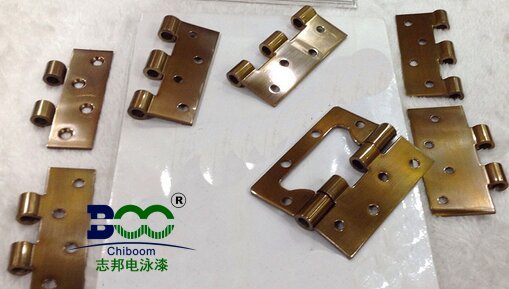Working principle of electrophoretic paint
Electrophoretic Paint: A Detailed Explanation of Its Working Principle
I. Introduction
Electrophoretic paint, as an efficient painting technology, has gained widespread application in various industries such as automobiles, home appliances, and building materials due to its unique principles and significant advantages. This article will provide a detailed explanation of the working principle of electrophoretic paint, including its painting process, chemical and physical changes, and corresponding process characteristics.
II. Basic Principle of Electrophoretic Paint
The basic principle of electrophoretic paint involves utilizing an electric field to deposit paint particles evenly and densely on a metal surface. During the electrophoretic painting process, the metal workpiece is first suspended on a negatively charged cathode, while the paint is suspended in an aqueous solution and carries a positive charge. By applying an electric field, the paint particles move towards the negatively charged surface of the workpiece, achieving uniform deposition of the paint on the workpiece surface. Subsequently, through post-processing techniques such as baking, a dense and sturdy coating film is formed.

III. Chemical and Physical Changes in Electrophoretic Painting
The electrophoretic painting process involves four chemical and physical changes: electrolysis, electrophoresis, electrodeposition, and electroosmosis.
Electrolysis: When a direct current electric field is applied to an aqueous solution containing electrolytes, the water undergoes electrolysis, releasing oxygen at the anode and hydrogen at the cathode. This electrolysis process needs to be controlled appropriately to prevent coating defects such as pinholes and roughness.
Electrophoresis: In a colloidal solution, charged colloidal ions dispersed in the medium move towards electrodes of opposite charges under the action of a direct current electric field. This migration process is called electrophoresis, which is the basis of electrophoretic painting.
Electrodeposition: The deposition of paint particles on the electrode is known as electrodeposition. During the electrophoretic painting process, charged particles (resins and pigments) reach the electrode of opposite charge under the electric field, become insoluble in water after neutralization, and deposit onto the substrate to form a coating film. Electrodeposition is the most crucial step in the electrophoretic painting process.
Electroosmosis: During the initial stage of coating film deposition, the charges of the particles (or ions) may not be fully neutralized or discharged. Under the continuous action of the electric field, water contained within the coating film osmotically migrates towards the working fluid, dehydrating the coating film. This process, known as electroosmosis, helps enhance the density and adhesion of the coating film.
IV. Process Characteristics of Electrophoretic Paint
Efficiency: Electrophoretic painting is an efficient painting method that can coat a large number of workpieces in a short time, improving production efficiency.
Environmental Friendliness: Electrophoretic paints use water-soluble or water-dispersible ionic polymers as film-forming substances, making them more environmentally friendly and reducing environmental pollution compared to traditional solvent-based paints.
Quality: Electrophoretic painting produces coatings that are uniform, dense, corrosion-resistant, abrasion-resistant, and possess excellent decorative and protective properties.
Flexibility: Electrophoretic paints can be classified into anode electrophoretic paints and cathode electrophoretic paints based on the electrode of the coated workpiece. They can also be divided into anionic electrophoretic paints and cationic electrophoretic paints according to the ionic form of the film-forming substances in water. This diversity allows electrophoretic painting to adapt to the coating needs of different materials and workpiece shapes.
V. Conclusion
Electrophoretic paint, as an advanced painting technology, has been widely applied in various industries due to its efficiency, environmental friendliness, quality, and flexibility. By deeply understanding the working principle and process characteristics of electrophoretic paint, we can better master its application techniques and methods, providing strong support for the quality of product coatings.





 WeChat
WeChat